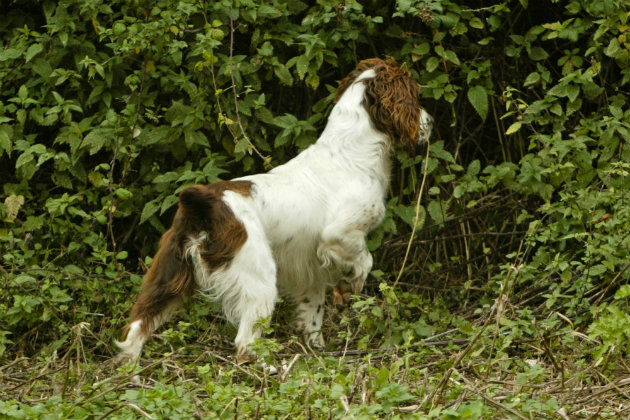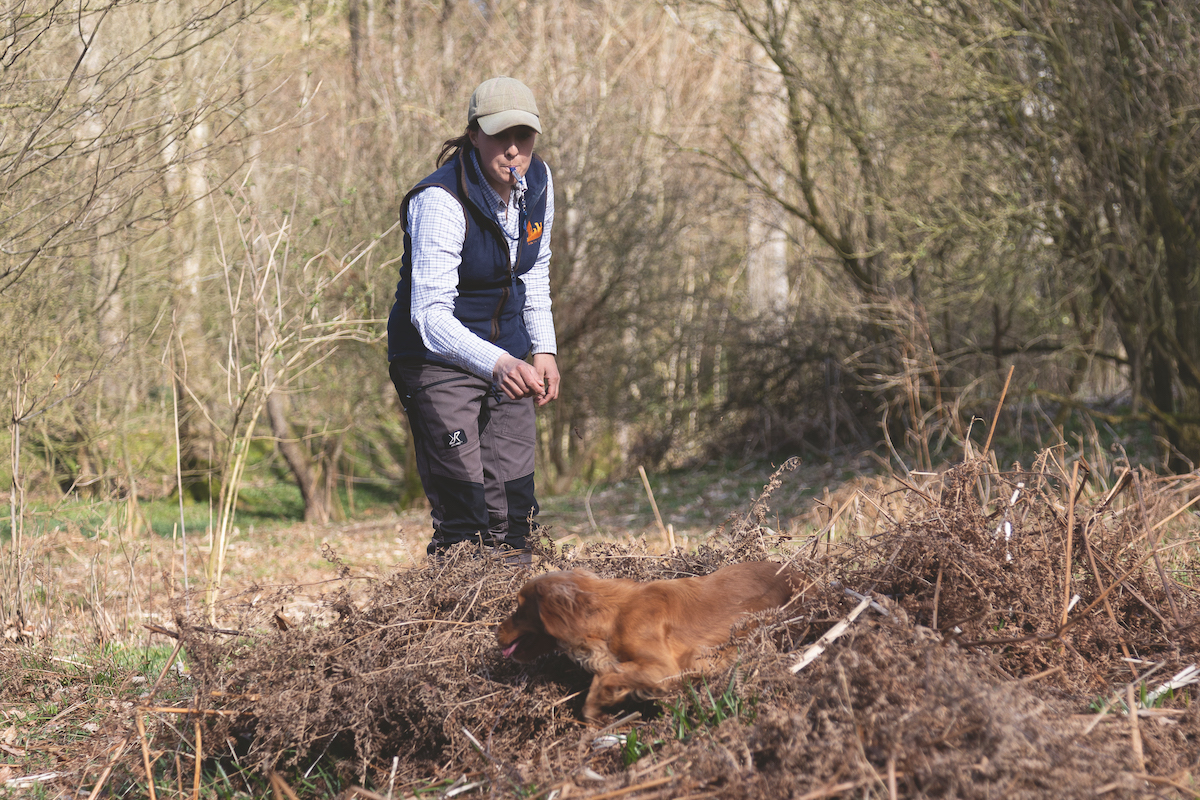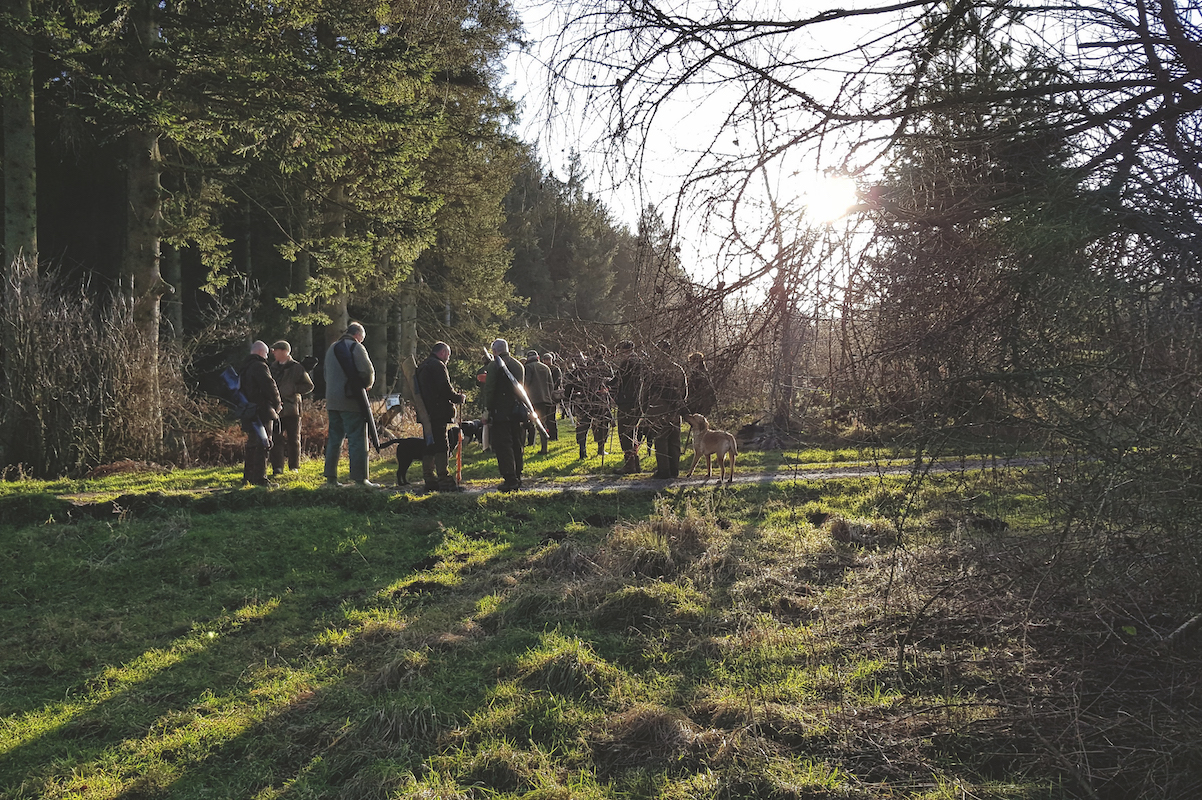Training your gundog to enter cover
Fran Ardley takes you through the stages of acclimatising your dog to cover

The one thing that your gundog will have to do at some point is to be willing and able to enter cover. Whether that be to find and retrieve shot game or to flush a tight-sitting pheasant or rabbit, they will have to do it. A gundog that skirts around cover will inevitably miss game, which will be frustrating and could be considered a major fault in its training. (Read our tips on gundog training equipment, here’s what a top trainer says you’ll need .)
Training your gundog to enter cover
Cover can mean anything from a thick bramble to light rushy patches of grass, but in most cases the term is most commonly used to describe thicker vegetation and stick piles, all perfect hiding places for our quarry. It would be expected that all breeds of gundog will enter cover, but the retrieving breeds probably won’t do it with the same enthusiasm as a spaniel. Also, some dogs may have a propensity to crash about in bramble patches, whereas others will need to be taught and encouraged.

Increase the thickness and density of cover to make things more challenging
When to start
A bold dog will be easier to encourage to bustle about in cover, while a sensitive dog will need a slower and more considered approach. So when should you begin training your gundog to enter cover? I wouldn’t foresee that you would want to start this process until the dog was at least six to seven months old, as by that age it should be physically strong enough to push through the cover and if you have done your early training correctly, the dog will be keen on retrieving a fur ball or a canvas dummy. If you have not developed that desire to retrieve, then you really shouldn’t be thinking about introducing the dog to cover. The key element to this exercise is that the dog learns to find things – in other words, the ball or dummy – in the cover, and it is this that ultimately gets the dog excited enough to ignore the discomfort of the thicker cover.
How to train the gundog
Dogs learn by repetition and success, and we use these two attributes in all aspects of our gundog training. Encouraging a dog to enter cover is no different, but it is important that you do not intimidate a young dog. In other words, do not ask your dog to do an exercise that it has not been trained to do, especially one that it has found difficult or uncomfortable and has either refused or given up on very quickly.
In the case of entering cover, this can lead to the dog skirting around and avoiding getting stuck in. It is important to say that gundogs are not stupid and they are not going to crash about in a thick bramble for nothing. We have to consider that their noses are far superior to ours and we should take into consideration that any reluctance may just simply be that the dog knows there is nothing to find. At the initial training stage you will be using artificial rewards such as a ball or a dummy, but later, as the dog experiences a few finds of live quarry, they will soon connect that it is always worth investigating any patch of cover, no matter how thick.

Find some rough grass, focus your dog and throw a ball towards the grass

The dog should be so keen to get the retrieve that it doesn’t even think about the cover
Rough and ready
Before starting on this exercise of training your gundog to enter cover, your gundog needs to be a keen retriever. Find an area of rough grass, get the dog focused on you and throw a fur ball out towards the grass. Do not hold the dog back and let it run in. The idea is that the dog is so keen to get the retrieve that it doesn’t even think about the cover. I like to use a slightly heavier ball so that it buries itself in the thick grass and so the dog has to work to find it.

Next, throw the ball into a loose stick pile – not too thick at first or it may intimidate the dog
Stick piles
The next stage is to locate some loose stick piles; at this stage you don’t want to use anything too thick as you want to build up the dog’s confidence and they need to be able to get in between the sticks without too much effort. As you throw the ball or dummy you can hold the dog back or even turn it away from the retrieve, as this will increase its desire to get to the ball. Wait a minute or so and then send the dog and you should find that the dog is so keen to get to the ball he gives little regard to the sticks. Gradually build this up in terms of the waiting time before sending the dog and also the thickness of the stick pile.

As you repeat this exercise, the dog should retrieve with little regard for sticks

Holding the dog back as you throw the ball will increase its desire to get to the retrieve
Increasing thickness and density
By the time you get to this stage of the exercise the dog should be connecting that there are good things to find in cover, so you can now increase the thickness and density of the cover. For this part of the training programme, I try to find a stick pile with vegetation growing in it so it makes things a bit more challenging for the dog. Try to avoid stinging nettles unless it is later in the year and they have started to go over. Again, start off by letting the dog run in to help to develop its enthusiasm; once the dog has got the idea you can hold them back as before. (Read stinging nettles hurt dogs.)








